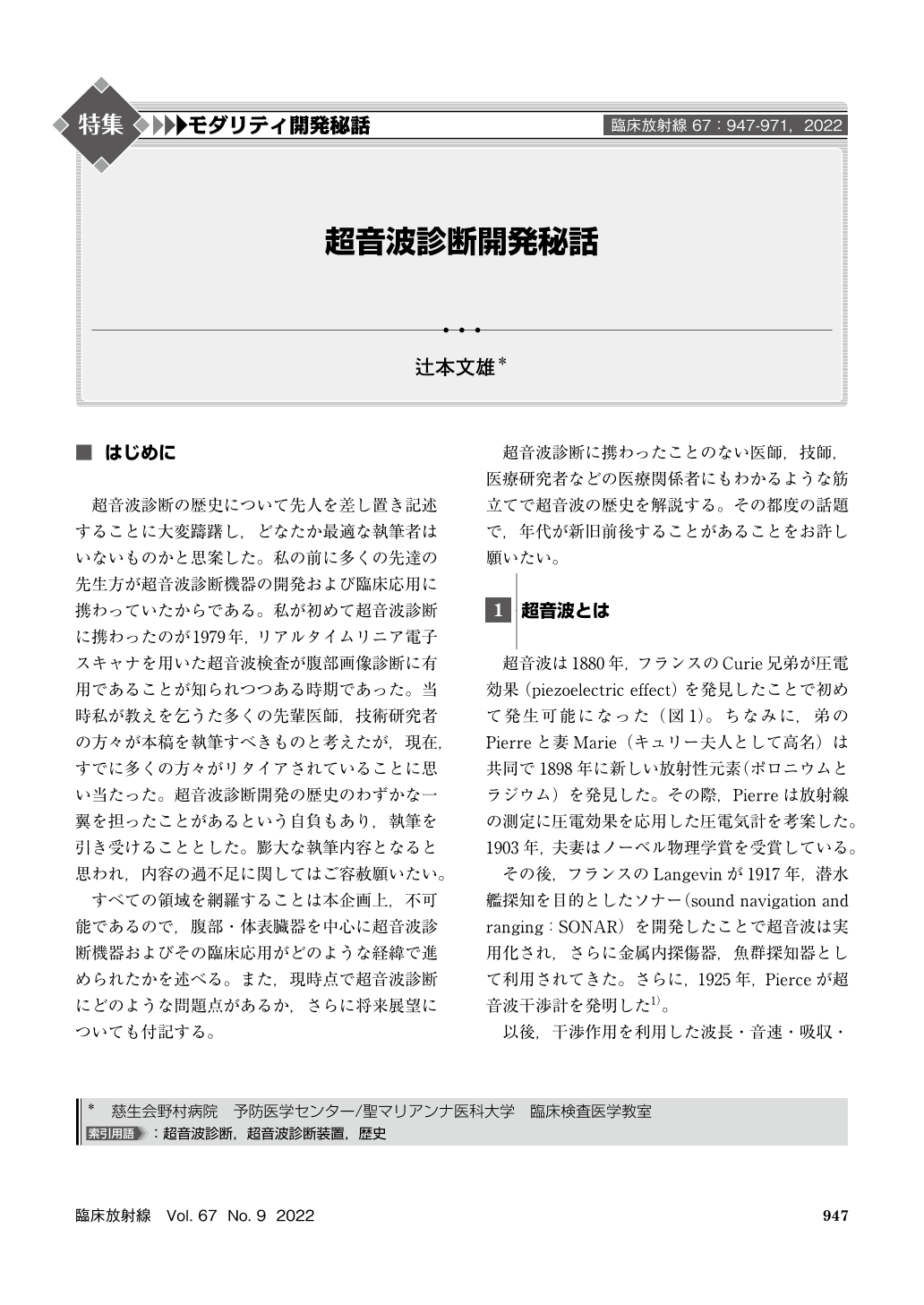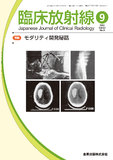Japanese
English
- 有料閲覧
- Abstract 文献概要
- 1ページ目 Look Inside
- 参考文献 Reference
超音波診断の歴史について先人を差し置き記述することに大変躊躇し,どなたか最適な執筆者はいないものかと思案した。私の前に多くの先達の先生方が超音波診断機器の開発および臨床応用に携わっていたからである。私が初めて超音波診断に携わったのが1979年,リアルタイムリニア電子スキャナを用いた超音波検査が腹部画像診断に有用であることが知られつつある時期であった。当時私が教えを乞うた多くの先輩医師,技術研究者の方々が本稿を執筆すべきものと考えたが,現在,すでに多くの方々がリタイアされていることに思い当たった。超音波診断開発の歴史のわずかな一翼を担ったことがあるという自負もあり,執筆を引き受けることとした。膨大な執筆内容となると思われ,内容の過不足に関してはご容赦願いたい。
Curie brothers discovered the piezoelectric effect and could generate ultrasound in 1880. Thereafter, the history of ultrasonography began with the use of ultrasound in 1942 by Dussik to diagnose brain diseases. In Japan, basic ultrasound research had been conducted at Tohoku Imperial University since before World War Ⅱ, but authentic research of ultrasonography began immediately after World War Ⅱ. In the early 1950s, Kikuchi in Tohoku University, Uchida in Japan Radio Co., and Tanaka and Wagai in Juntendo University actively conducted research on ultrasound diagnostic equipment and ultrasonography, and Japanese research has led the world. The 1960s were the era of practical application and generalization of ultrasonography. In the 1970s, new ultrasound devices were equipped with the Digital Scan Converter, which dramatically improved image quality and became a useful laboratory method clinically. In the 1980 s, it was the era of real-time linear electronic scanning systems equipped with DSCs. In 1982, Namekawa in Japan Radio Co. developed a color-Doppler ultrasound diagnostic system by applying the moving target indicator(MTI)method of radar, and it can be said that it is the second revolution of ultrasonography. The development of harmonic imaging in the early 1990s was a revolutionary development for the next generation, and tissue harmonic imaging(THI)contributed to the improvement of the image quality on ultrasonography. Contrast harmonic imaging with microbubbles is non-invasive testing method that is currently in the spotlight. In 2003, Elastography was put into practical use, in which tissue hardness can be diagnosed by ultrasound. Although Japan has led the way in the development of ultrasound diagnostic equipment and ultrasonography, there is a risk that Japan’s deflationary situation will prevent further development in the future.

Copyright © 2022, KANEHARA SHUPPAN Co.LTD. All rights reserved.


